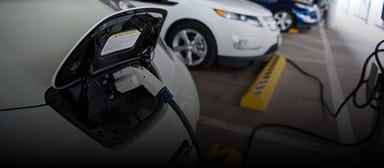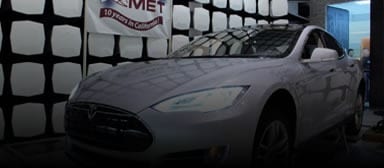Our Automotive EMC Testing Capabilities »
What is Automotive EMC Testing?
Automotive electromagnetic compatibility (EMC) testing is performed to verify that the electronic equipment installed on vehicles is not susceptible to external interference, while also not radiating unacceptable levels of energy.
Why is Automotive EMC testing important?
As increasing amounts of electronics are introduced to automotive environments, electromagnetic compatibility challenges are among the primary concerns of automotive manufacturers. The high volume of electronic devices can create electromagnetic fields that interfere with device performance and prevent electronics from operating normally.






